Masterpiece Story: Portrait of Madeleine by Marie-Guillemine Benoist
What is the message behind Marie-Guillemine Benoist’s Portrait of Madeleine? The history and tradition behind this 1800 painting might explain...
Jimena Escoto 16 February 2025
Queen Nefertari and Goddess Isis is a fabulous masterpiece of ancient Egyptian art. The wall painting in the queen’s tomb captures the dream of a better tomorrow, portraying the Egyptian Goddess Isis leading Nefertari by hand.
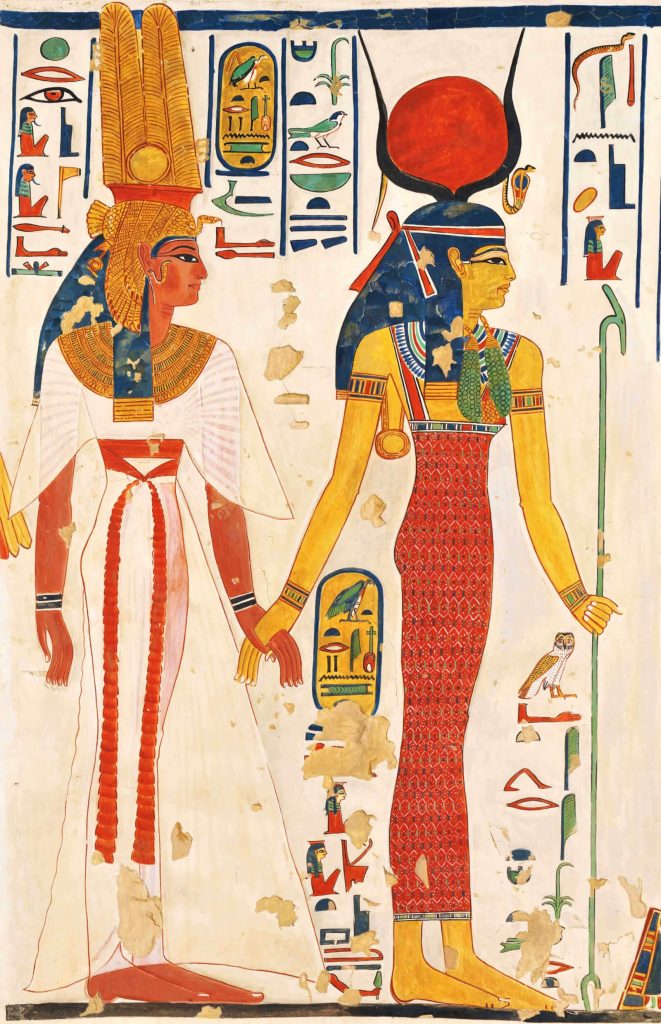
Queen Nefertari and Goddess Isis, New Kingdom, 19th Dynasty, ca. 1279-1213 BCE, pigment on plaster, QV66 Tomb of Nefertari, Valley of the Queens, Luxor, Egypt.
Queen Nefertari was the beloved principal wife of King Ramses II, also known as King Ramses the Great. They ruled ancient Egypt during the 19th Dynasty of the New Kingdom. The Ramesside era, under Ramses the Great, was an incredibly prosperous period. Ancient Egypt’s trading economy was booming, its political power was robust, and its artistic culture was maturing. This was an excellent time to be an ancient Egyptian artist. Art pieces flowed like the River Nile. Queen Nefertari & Goddess Isis is a masterpiece that pinnacles this creative period.
Queen Nefertari and Goddess Isis is a fresco secco, or dry fresco, which is a wall-painting technique. In fresco secco, the pigments are painted directly onto a dry plaster surface. The fresco measures 6’11 in by 4’6 in (210 x 138 cm). Therefore, the piece is monumental, and the two female figures are lifesize. Queen Nefertari wears white, and she stands on the fresco’s left. Goddess Isis wears red, and she stands on the fresco’s right. The queen and the goddess hold hands as Isis leads Nefertari toward the afterlife. The image is a piece of funerary art that remains in situ in the Tomb of Nefertari. The painting is one of many frescos adorning the “Sistine Chapel of Ancient Egypt.”
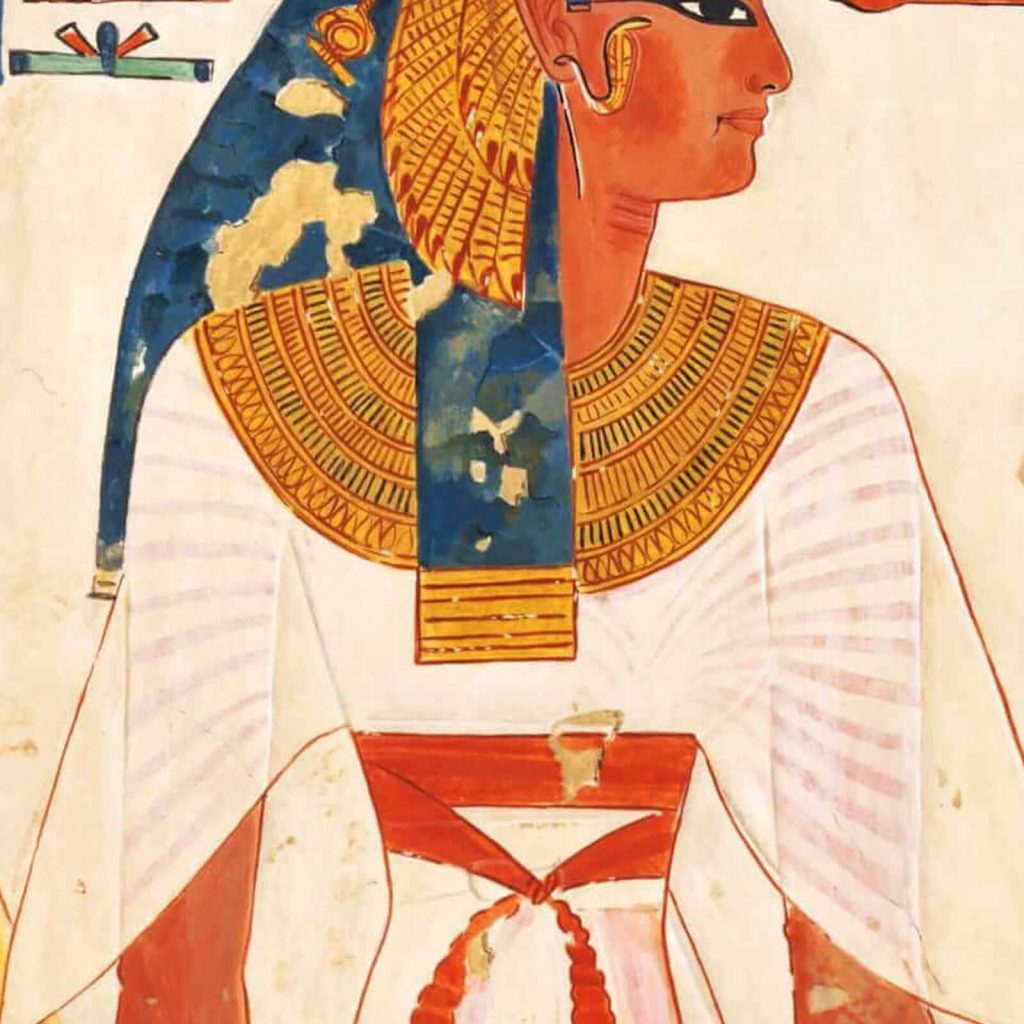
Queen Nefertari and Goddess Isis, New Kingdom, 19th Dynasty, ca. 1279-1213 BCE, pigment on plaster, QV66 Tomb of Nefertari, Valley of the Queens, Luxor, Egypt. Detail.
Queen Nefertari wears the shuti or double-feather crown of the God Amun atop her draping vulture crown. Two long tail feathers from an ostrich or falcon rise from the shuti crown’s base and embrace a sun disk. Such a crown was worn by Nefertari during select religious-political ceremonies. The shuti is a symbol of the God Amun, a chief deity in the ancient Egyptian pantheon. The crown’s two feathers symbolize maat which is a divine idea combining truth, justice, wisdom, order, and balance. Maat is what every good person intended to achieve. By wearing the shuti, Nefertari is declaring she possesses maat and is worthy to enter the afterlife.
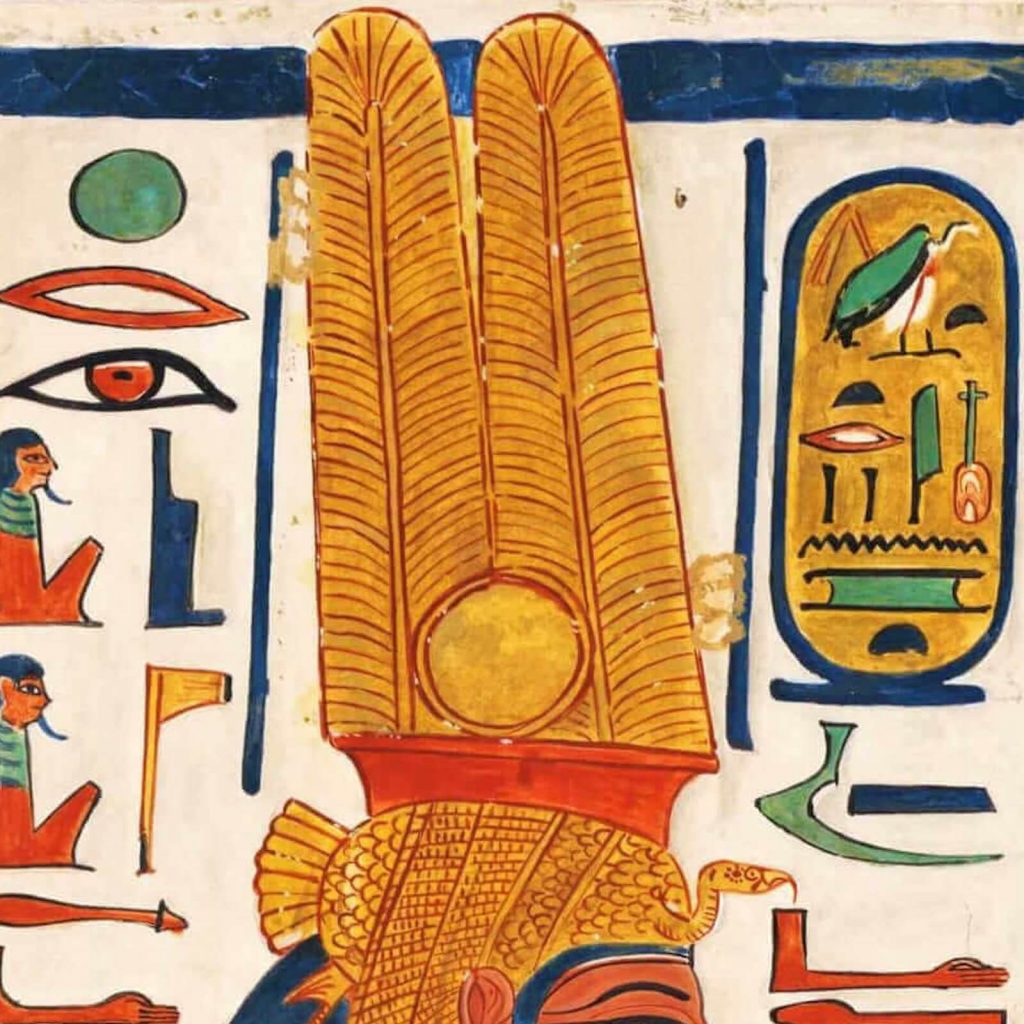
Queen Nefertari and Goddess Isis, New Kingdom, 19th Dynasty, ca. 1279-1213 BCE, pigment on plaster, QV66 Tomb of Nefertari, Valley of the Queens, Luxor, Egypt. Detail.
Hieroglyphics, the ancient Egyptian language writing system, surround the queen and the goddess. Many tomb hieroglyphics describe the spells and incantations needed by the tomb owner to enter the afterlife which were extracted from a literary collection informally known as the Book of the Dead. Nefertari’s name appears twice in the hieroglyphics and is easily distinguished by the two oval name plates, cartouches or shenu, found in the fresco.
One cartouche is immediately to the right of the shuti, and one cartouche is immediately to the right of the embracing hands. Only royal names were worthy of a cartouche, therefore non-royal tombs and monuments do not display a cartouche. Non-royals were still named in hieroglyphics, but their names were not surrounded by the evil-protecting oval boundary.
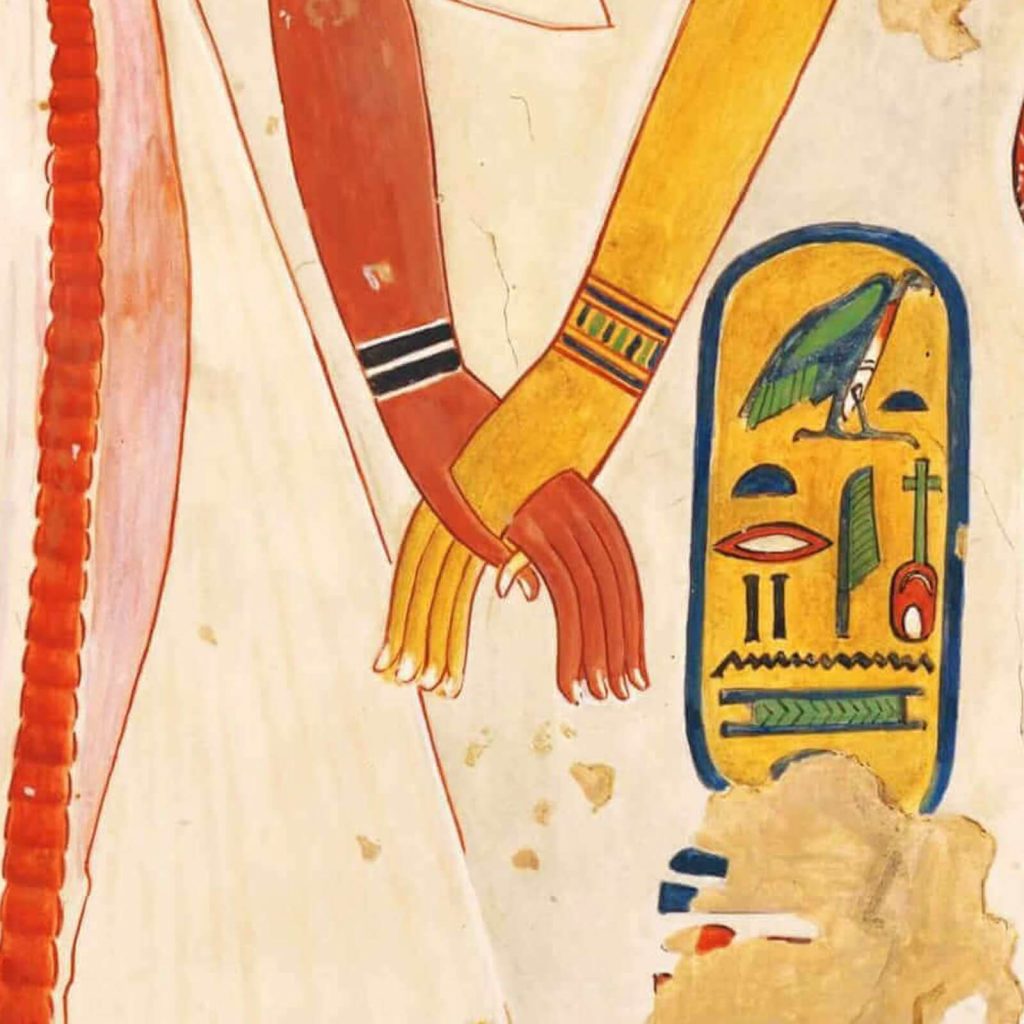
Queen Nefertari and Goddess Isis, New Kingdom, 19th Dynasty, ca. 1279-1213 BCE, pigment on plaster, QV66 Tomb of Nefertari, Valley of the Queens, Luxor, Egypt. Detail.
Goddess Isis wears a red cloth dress with an over beaded net dress. She was one of the most important deities in the ancient Egyptian pantheon. She was most famously adopted by Queen Cleopatra VII as part of the queen’s identity when she met both Julius Caesar and Marc Anthony. Goddess Isis was a patron deity for mourners, healers, and mothers. Therefore, she had rites over the dead, cured the sick, and protected mothers and children.
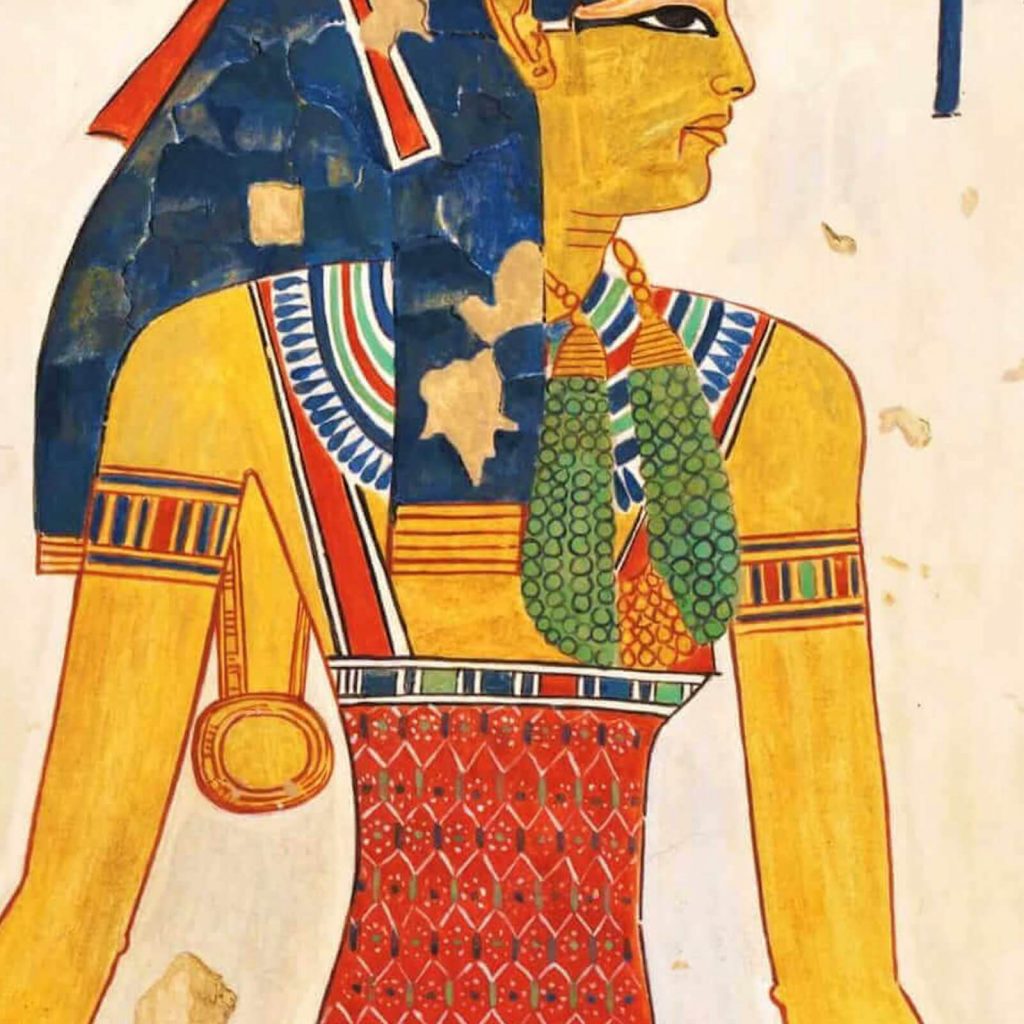
Queen Nefertari and Goddess Isis, New Kingdom, 19th Dynasty, ca. 1279-1213 BCE, pigment on plaster, QV66 Tomb of Nefertari, Valley of the Queens, Luxor, Egypt. Detail.
Goddess Isis wears the horned solar crown appropriated from the Goddess Hathor. The horned solar crown represents rebirth, creation, and renewal. Therefore, Isis is empowering and granting Nefertari a second life as an afterlife. Nefertari may be dead in this world, but she will live again in the next world.
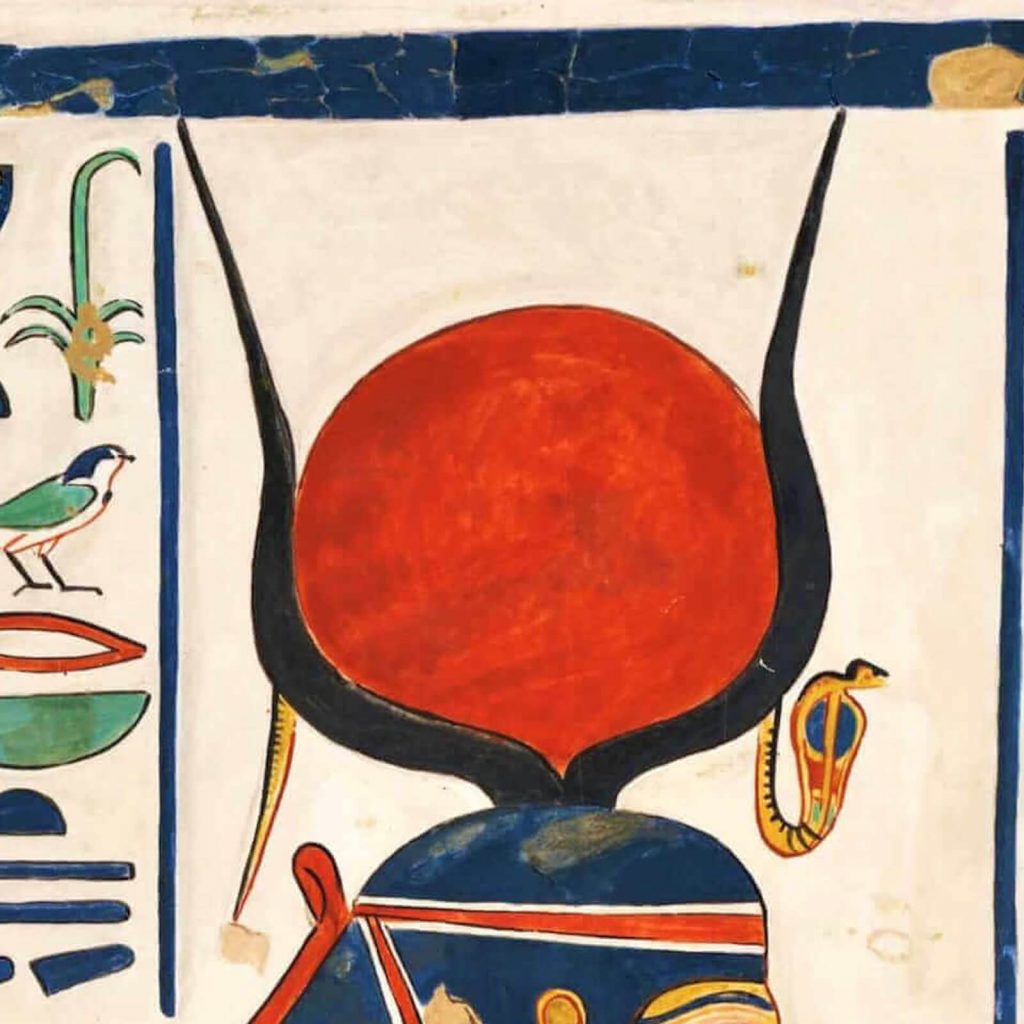
Queen Nefertari and Goddess Isis, New Kingdom, 19th Dynasty, ca. 1279-1213 BCE, pigment on plaster, QV66 Tomb of Nefertari, Valley of the Queens, Luxor, Egypt. Detail.
Queen Nefertari and Goddess Isis is an underground fresco, which requires extensive preparation by the artist. First the chamber was carved, and the walls were roughly cut. Then two, sometimes three, layers of clay reinforced with straw were applied to the rough walls to fill and cover every crack and irregularity. Then a finer final layer of gypsum-based plaster was applied to create a smooth canvas. Hib silt from the River Nile was the most valued plaster base because of its extra-fine white sand particles.
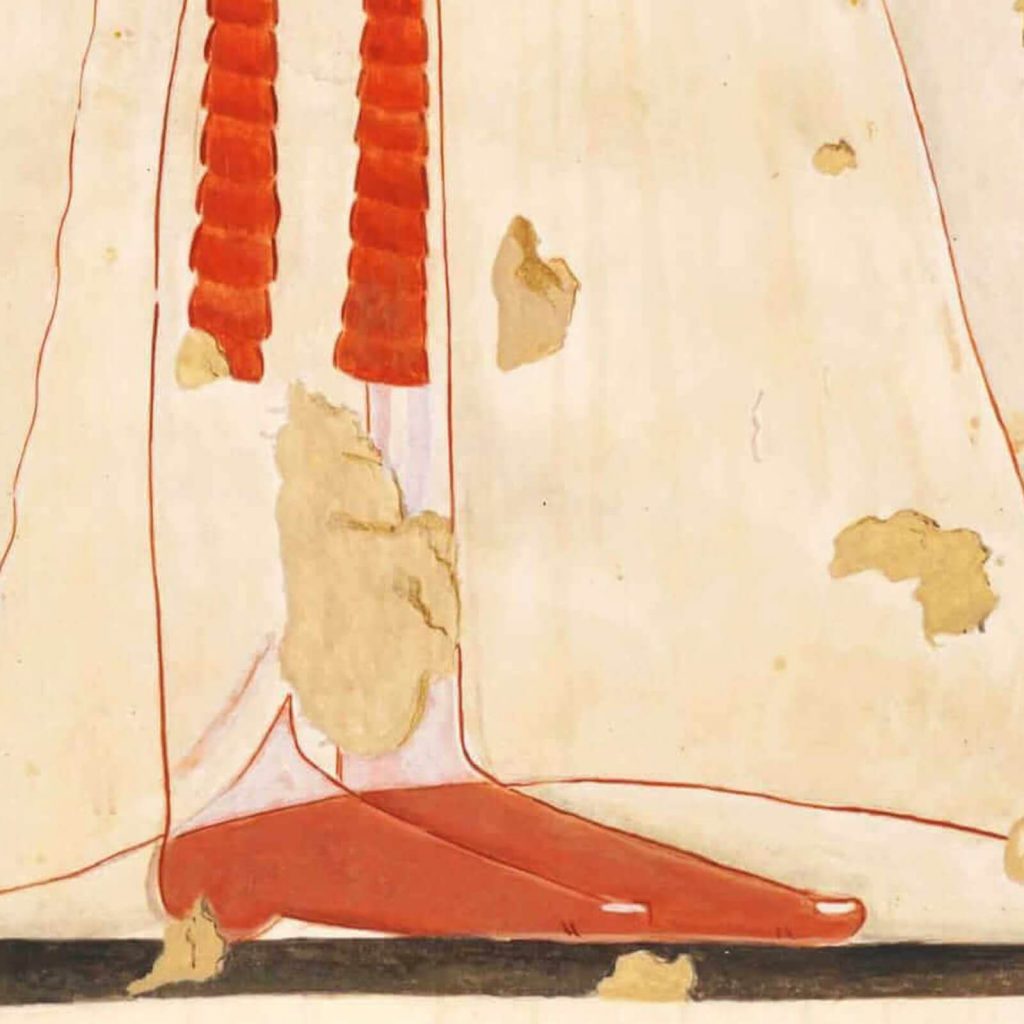
Queen Nefertari and Goddess Isis, New Kingdom, 19th Dynasty, ca. 1279-1213 BCE, pigment on plaster, QV66 Tomb of Nefertari, Valley of the Queens, Luxor, Egypt. Detail.
Eight natural tempera pigments dominate the color scheme of Queen Nefertari and Goddess Isis. They are the primary colors of red, yellow, and blue which were created from iron oxide, arsenic, and strontium. Then there are the secondary colors of orange, green, and purple which were created from realgar, copper, and murex sea snails. Finally there are the monochrome colors of black and white which were created from calcite and charcoal.
All these pigments were individually ground, mixed with a binding, and then applied to the dry plaster. Most artists used egg white or animal glue for their bindings. However, finer artists such as the creator of Queen Nefertari and Goddess Isis used gum arabic from the acacia tree commonly found in the Luxor region. Gum arabic was timely therefore expensive to produce and to buy, but it was the most superior binding ancient Egyptians had commercially available. Hence, only the best binding was used for Queen Nefertari’s painting.
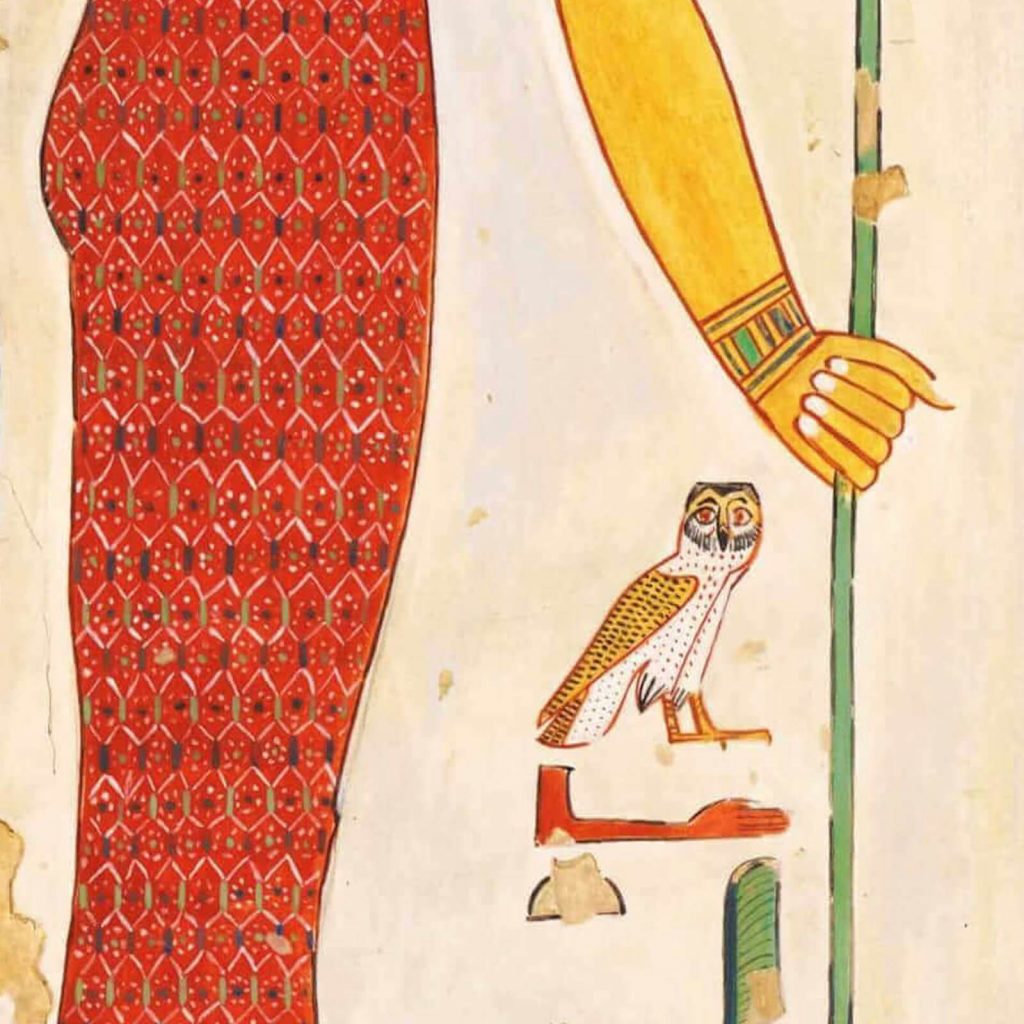
Queen Nefertari and Goddess Isis, New Kingdom, 19th Dynasty, ca. 1279-1213 BCE, pigment on plaster, QV66 Tomb of Nefertari, Valley of the Queens, Luxor, Egypt. Detail.
The primary colors define the largest regions of the painting like the goddess’ dress. The secondary colors define the smaller details of the image like the hieroglyphics. White fills the background’s negative space, while black outlines the objects’ positive space. Therefore, there is a limited but orderly color palette which sympathizes with the frontal non-linear perspective. These elements enhance the piece’s monumental impact similar to paintings millennia later by Piet Mondrian or Jackson Pollock. There is a bold simplicity without immaturity.
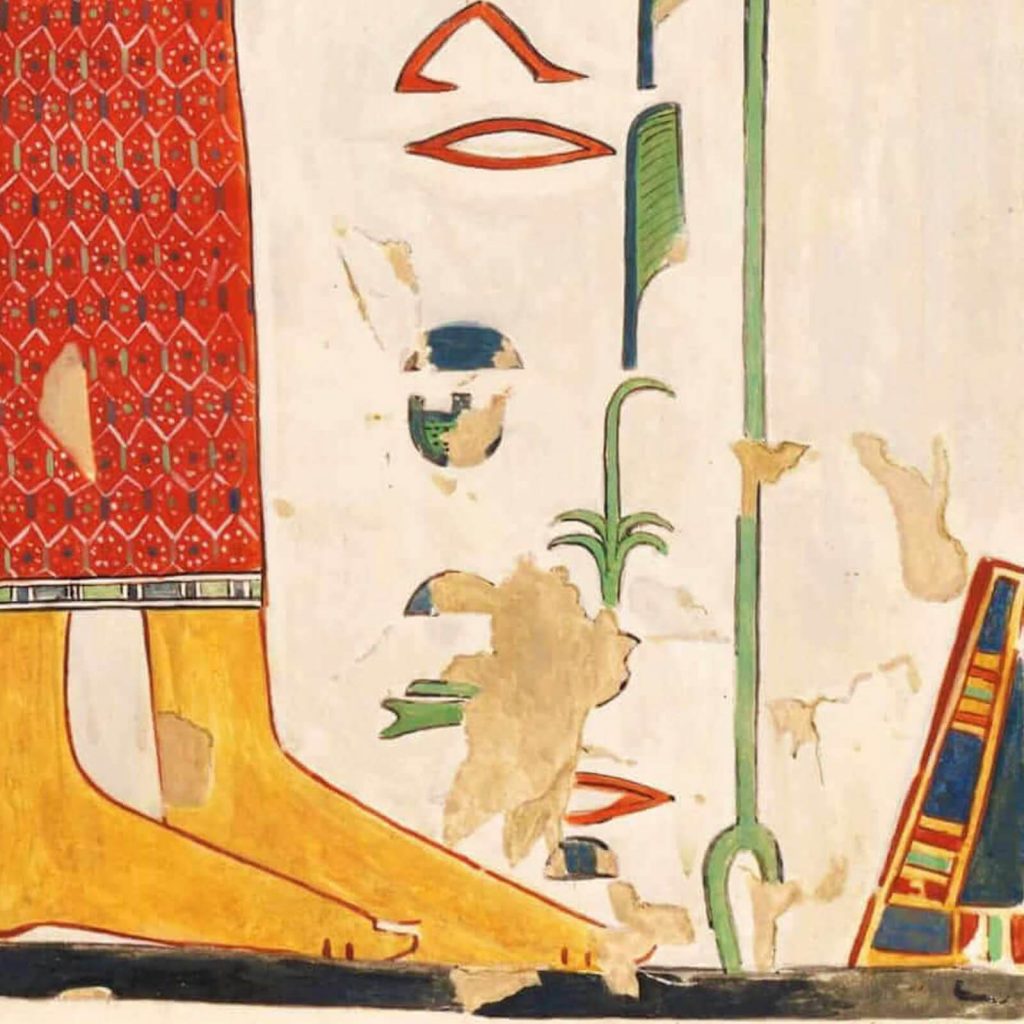
Queen Nefertari and Goddess Isis, New Kingdom, 19th Dynasty, ca. 1279-1213 BCE, pigment on plaster, QV66 Tomb of Nefertari, Valley of the Queens, Luxor, Egypt. Detail.
Ancient Egyptian paintings are captivating through their portrayal of healthy bodies, youthful energy, and idealized hopes. There are very few examples of death and disease outside the context of the king’s enemies in conquering scenes. Queen Nefertari wanted her tomb to be a “House of Eternity” where she is forever young, happy, and healthy.
Let us hope that she is forever happy knowing that her tomb and its images are still admired three millennia later. Could you imagine anything you possess not only surviving but being admired and being written about over 3,000 years from now? Queen Nefertari and Goddess Isis is a fabulous masterpiece of ancient Egyptian art. It captures the imagination. It captures the heart. It captures the dream of a better tomorrow.
Art and Eternity: The Nefertari Wall Paintings Conservation Project 1986-1992. Ed. by Mahasti Ziai Afshar and Miguel Angel Corzo, Oxford, UK: Oxford University Press, 1993. Digitized 2022.
E. A. Wallis Budge: An Egyptian Hieroglyphic Dictionary. Mineola, NY: Dover Publications, 1978.
Double feather crown of Amun. Collection. Metropolitan Museum of Art. Retrieved 24 September 2022.
Joyce Tyldesley: Isis, Encyclopædia Britannica, 22 August 2022.
Queen Nefertari being led by Isis. Collection. Metropolitan Museum of Art. Retrieved 20 September 2022.
DailyArt Magazine needs your support. Every contribution, however big or small, is very valuable for our future. Thanks to it, we will be able to sustain and grow the Magazine. Thank you for your help!